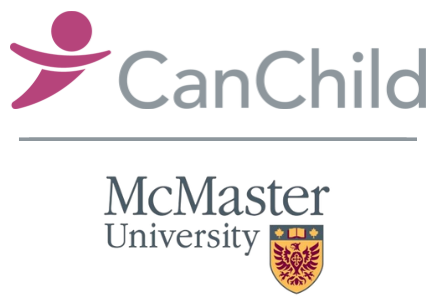The Collaborative Process for Participation Goals was developed by Robert Palisano and Lisa Chiarello to provide a systematic but flexible process to guide families and therapists through the many considerations necessary to develop action plans (also referred to as care plan or intervention plan) for participation goals.
Use of the Collaboration Process is described in Palisano, R., Chiarello, L., King, G., Novak, I, Stoner, T. & Fiss, A. (2012). Participation-based therapy for children with physical disabilities. Disability and Rehabilitation, 34(12), 1041-1052, https://pubmed.ncbi.nlm.nih.gov/22080765/. A study to examine content validity and clinical utility has been submitted for publication. A case series was recently completed in the outpatient physical therapy setting on using a smart phone to facilitate collaboration towards achievement of goals for community participation.
The Collaborative Process for Participation Goals has been translated into Finnish. Nea Vänskä and Salla Sipari have developed a Finnish manual with background information, case examples, strategies for therapists as well as information letter for the family to help them prepare for the collaborative process beforehand (http://www.theseus.fi/handle/10024/140228).
See below a document that describes a collaborative process to develop an action plan for children’s participation goals and some cases examples.
Collaborative Process for Participation Goals fillable form
Content Validity and Utility of the Collaborative Process for Action Plans to Achieve Children’s Participation Goals
Content validity and clinical utility of the Collaborative Process for Action Plans to Achieve Children’s Participation Goals were evaluated. The collaborative process is designed to assess child, family, and environment strengths and areas for improvement specific to a child’s participation goal and identify intervention strategies and the person(s) responsible for each strategy. Twelve pediatric therapists participated in one of two Nominal Group Consensus Process. Following discussion, therapists rated the importance of child, family, and environment attributes, clarity of wording, and the usefulness of the collaborative process. Ratings for 91% (first group consensus) and 100% (second group consensus) of the statements met the criterion for consensus, supporting content validity. Ten parent/child/therapist teams evaluated clinical utility. Written responses to open-ended questions were coded using inductive content analysis. Parents and therapists indicated that the collaborative process promotes engagement, the goal is considered from many viewpoints, and there is a joint commitment to the action plan. Limitations included time to complete, the need for preparation and more guidance, and unfamiliar expressions. Familiarity with collaborative, solution focused processes and participation interventions are considerations for use in practice. Research is recommended in which the action plan is implemented, progressed, and achievement of participation goals are evaluated.
Authors: Palisano, R.J., Chiarello, L.A., Vänskä, N., Sipari, S. (2022). Disabilities, 2,626-640. https://doi.org/10.3390/disabilities2040045
